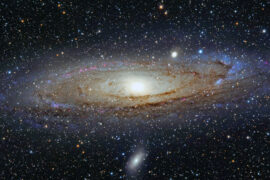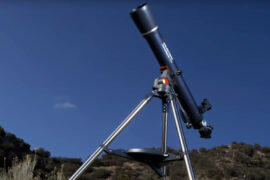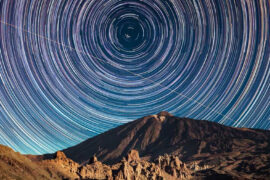Constellations are more than just pretty formations of stars in the sky. But do they really have uses in science or are they simply part of the popular culture these days?
Throughout history, constellations have been used in navigation, agriculture, and in some cultures for divination and religious purposes. Even in modern days they still have uses like functioning as “borders” to map out the sky.
In this article, we’ll learn more about each of these uses. But first things first. Let’s start with definitions.
What is a constellation?
A constellation is a group of stars that are near each other from our point of view on Earth. The human brain has a tendency to find patterns. So we found shapes in these stars as if they were a connect-the-dots exercise on a children’s coloring book.
We found animals, objects, and even mythological creatures and heroes. The International Astronomical Union currently recognizes a total of 88 constellations.
We don’t know who came up with their names and when they did it, but we believe most of the ones we use and know were named by the Sumerians. They were later cataloged in the modern era by the Greek astronomer Ptolemy in the 2nd century. Ptolemy’s catalog had 48 constellations, all of them located in the northern hemisphere as that was the part of the sky he had access to.
Other cultures had different shapes and names for the constellations. For example, the Chinese had their own starmap with more than 200 asterisms. Some of the names for the southern constellations were inspired by that source. The Mayans may have also had their own constellation chart.
In 1922 the modern catalog of constellations was created.
What were constellations used for in ancient times?

Constellations have multiple uses in ancient times.
1) Agriculture / Seasonal calendar
The first practical use constellation had was serving as a seasonal clock. Even though calendars exist in some form since ancient Mesopotamia, they weren’t as formally used as they are today, especially by farmers and peasants. It was much easier for them to remember the shapes in the sky and they looked at it every night.
Many farming customs happened around the events in the sky. For example, in ancient Rome, the March equinox, or Mucenic marked the start of the agricultural year. On this day, the Roman farmers cleaned their rakes, sickles, and tools with water and fire ceremoniously as a way to protect the harvest.
When Orion was up in the sky, they knew winter was coming, while the summer triangle got its name because it was used to tell when summer was approaching.
2) Navigation
Before compasses and maps, sailors and explorers had to use the stars to find their way across the seas.
There are a few constellations that never rise or set in some parts of the world. Five in the northern hemisphere (Cassiopeia, Cepheus, Draco, Ursa Major, and Ursa Minor) and three in the south (Carina, Centaurus, and Crux).
Because they are always in the sky, these circumpolar constellations functioned as a reliable way to know your position and direction. They were invaluable tools for sea men to find their way around.
Even today, it is recommended that navigators learn the basics of astronomical navigation in case of an emergency where the modern tools fail or are not available.
3) Time
Circumpolar constellations were also used to tell the approximate time at night. A common method in the northern hemisphere involves using the big dipper, part of the Ursa Major constellation.
The exact process is a bit inexact as it involves tracing imaginary lines and then applying a formula, but an experienced user of this method in ancient times was able to approximate it easily.
How are constellations used in modern astronomy?
Constellations are no longer used for navigation or to tell the time. We now have much better and more precise tools like GPS and atomic clocks. But that doesn’t mean constellations are no longer used by astronomers.
Even though constellations were arbitrarily chosen by ancient astronomers, they became so well known and commonly used that they started being used as unofficial “borders” in the sky.
When the modern constellation catalog was created, the night sky was split into 88 regions, each one belonging to a constellation.
These regions marked by constellations are used to name the stars, galaxies, and some other deep space objects that are found inside this region from our point of view on Earth.
For example, for a long time, the name of newly discovered stars was given by using the designation of the constellation and a sequence using the greek alphabet. That’s why some stars have names like Beta Andromedae, Delta Geminorium, or Sigma Leonis.
The most prominent nebulae also receive the name of the constellation they are in. For example, the Carina Nebula or the Orion Nebula.
Meteor showers also receive their name based on the region of the constellation they show up at. Even though meteor showers happen on Earth’s atmosphere, nowhere close to the stars in the constellations that are millions of light-years away. But as you can see, the constellations are used as borders to name objects in the sky.
They are also used as points of reference for both professional and amateur astronomers looking to find a certain object. For example, if you were looking to observe Stephan’s quintet with a telescope it is easy to point it in the right direction by knowing it is in the Pegasus constellation.
Summary
- Constellations were defined since the time of the Sumerian civilization.
- They were used in ancient times to predict the season, the time, and for navigation on both sea and land.
- In modern times, they are used to define borders and regions in the sky.







